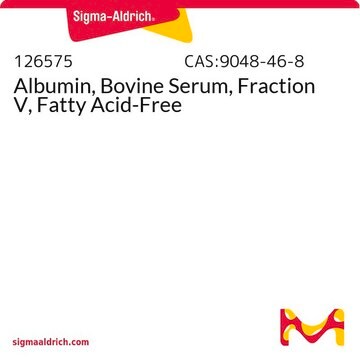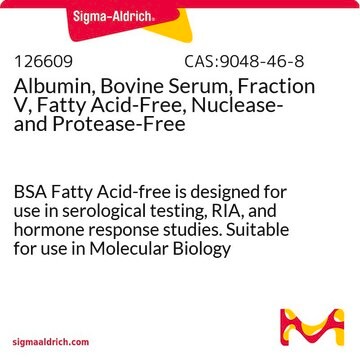126579
Albumin, Bovine Serum, Fraction V, Fatty Acid-Poor, Endotoxin-Free
Synonym(s):
Albumin, Bovine Serum, Fraction V, Fatty Acid-Poor, Endotoxin-Free
About This Item
Recommended Products
Assay
≥95% (Albumin, electrophoresis)
form
lyophilized powder
manufacturer/tradename
Calbiochem®
storage condition
OK to freeze
impurities
≤0.2% fatty acids
≤2.0% Ash
≤5% moisture
≤50 EU/mg endotoxins
color
pale green
solubility
aqueous buffer: 20 mg/mL
water: 20 mg/mL
shipped in
ambient
storage temp.
2-8°C
General description
Application
Biochem/physiol Actions
Warning
Preparation Note
Reconstitution
Legal Information
Storage Class Code
11 - Combustible Solids
WGK
WGK 3
Flash Point(F)
Not applicable
Flash Point(C)
Not applicable
Certificates of Analysis (COA)
Search for Certificates of Analysis (COA) by entering the products Lot/Batch Number. Lot and Batch Numbers can be found on a product’s label following the words ‘Lot’ or ‘Batch’.
Already Own This Product?
Find documentation for the products that you have recently purchased in the Document Library.
Customers Also Viewed
Our team of scientists has experience in all areas of research including Life Science, Material Science, Chemical Synthesis, Chromatography, Analytical and many others.
Contact Technical Service








